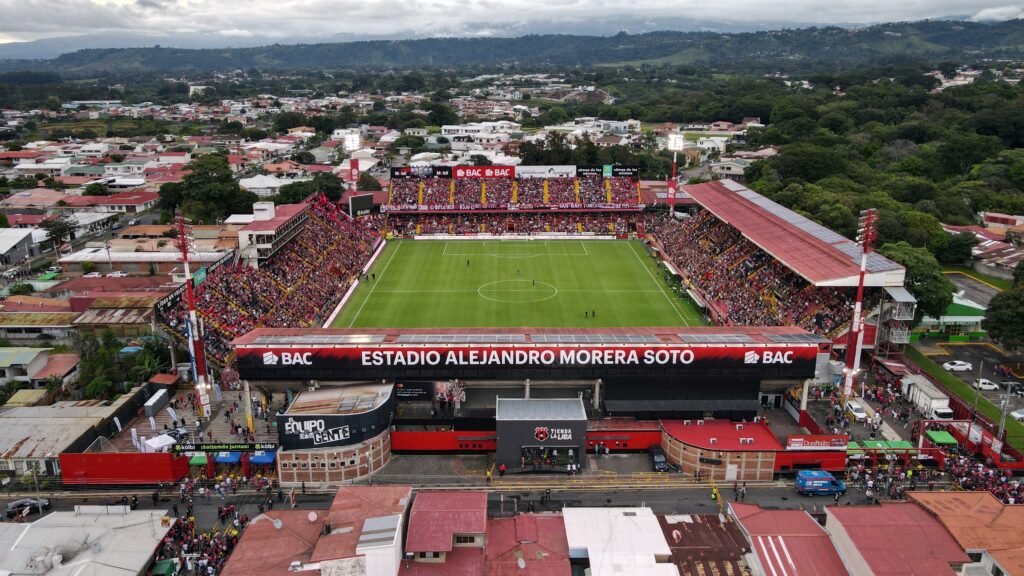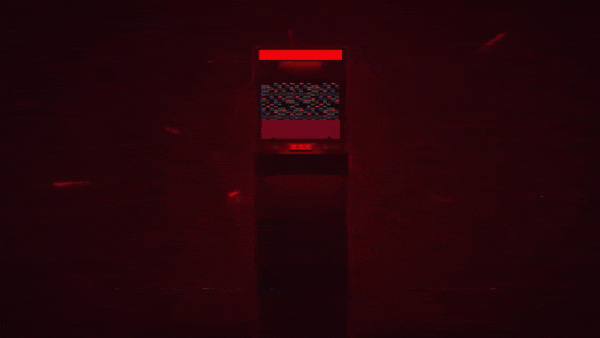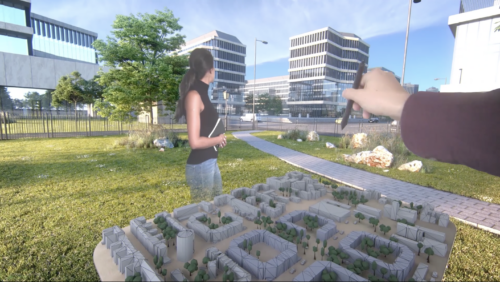Revolutionizing Soccer Fandom: Embracing Tech Innovation

Few things captivate the world’s attention the way soccer does. World wars have been suspended, political and social causes have been championed, and birth rates have risen thanks to the sheer power of soccer tournaments.
This year, Journey has been building a cross-studio strategy with a Costa Rican soccer team, Liga Deportiva Alajuelense. Together, we’ve planned everything from a Roblox world to an AR treasure hunt that will honor the passion of Alajuelense’s existing fans, offer experiences to bring the community together, and attract new fans.
While I’m personally more a fan of technology than sports, I’ve learned powerful lessons from uniting the virtual world with the world of this energetic soccer community, including how Web3 platforms can bring fans to the next level.

Giving voice to the fan community, one brick at a time
Fans are central to a soccer team, and nowhere is this more true than Liga Deportiva Alajuelense, one of the most successful soccer teams in Central America and the winner of 30 national championships. Alajuelense has a vibrant, passionate fan base with a unique history, and our work sought out new ways to pay tribute to that history.
Seventy years ago, during an event known as La Marcha del Ladrillo, the Alajuelense community mobilized to build the stadium that still stands today. Every child from every school in the area brought a brick, with over a million bricks contributing to form the walls of the stadium.

To help the team honor that legacy today, we created La Marcha, a Tetris-style game featuring brick-colored shapes. The game was both communal and competitive, with players working to arrange the different pieces into a solid wall and earn points. Once enough collective points had been accumulated, Alajuelense publicly revealed its new team uniforms (which featured, fittingly, a brick pattern). The game was a huge hit, motivating people to play well into the night and empowering the community to come together and create new history.

In designing La Marcha, we also discovered the astonishing extent of fans’ enthusiasm for new virtual spaces. After the game went live, a benevolent hacker and supporter of the team contacted Alajuelense’s administration to inform them of other hackers they’d discovered trying to cheat in the web game. Their support for their team led them to go out of their way to protect it, even though they likely could have exploited the same cheat themselves to win the real-world prizes of stadium tickets and merchandise.
The web game showed us that fans’ passion for their team’s legacy clearly extends to the virtual world. That led us to ideate multiple potential executions to help the team connect with fans in virtual spaces, exploit technology to bring fans together, radically change the fan experience, and boost fan engagement in an unprecedented way. The goal of these offerings is multifaceted. They will help the team honor its longtime supporters and strengthen their sense of community. By bringing fans’ passion to the next level through shared spaces, competitions, and experiences, we’re helping Alajuelense cement its legacy. However, these initiatives focus mainly on Generation Alpha, a very strategic segment, as there is a critical moment in the fan’s lifetime when they can be persuaded to select a team and make it a deeply ingrained part of their identity.
Bringing fans’ passion to life in the metaverse
Like hair color, fandom is something that is typically inherited, not adopted. Parents will initiate their children into the legacy and culture of a team, building family bonds and strengthening the team’s base. As diehard fans age, Alajuelense wants to invigorate this process and encourage more young fans to support the team and join its official membership.

The team’s administration has noticed that young fans are already spending their time in Web3 spaces — sometimes even while they’re sitting in the stadium watching a live match — and that some are even recreating the world of the team on platforms like Roblox. To appeal to this younger generation, we’re creating official Alajuelense worlds in virtual spaces.
Our Roblox world, which launched on September 9, includes a trophy room, an obstacle course, a trivia game, and various soccer fields, including anti-gravity, mud, and ice world versions. Players can buy official Alajuelense merch for their avatars and talk to avatars of legendary players about the team’s history. The Roblox virtual experience also includes a twist: The team will be announcing its press releases, including news about player transfers and more, in the Roblox press room before its official (analog) press conferences.
This is something that almost no one else is doing in sports — offering exclusive access to team news on a Web3 platform before a traditional media platform — and we’re excited to be a part of it. This also sends a clear message: young fans are a priority. Mundo Liguista was inspired by Alajuelense’s Centro de Alto Rendimiento (CAR), its training grounds and academy, where both the male and female first division and youth teams train on a daily basis. CAR is also home to 70 children from all over the country, the future stars of Alajuelense and potentially the Costa Rican national team.
The launch of Mundo Liguista was also quite unique. On September 9th, the CAR training grounds brought the virtual game to life in celebration of National Children’s Day. The immersive experience started in the press room, where fans saw a trailer of the game and got a chance to be the first to get a taste of Mundo Liguista on several devices. Fans then went through a series of experiences showcasing the virtual world’s main features (trivia, lobby, different soccer fields) to bring the experience full circle. The day felt like the Alajuelense’s gift to children on a day that is celebrated intensely throughout the country.

In its first days live, Mundo Liguista has seen unprecedented favorability, with close to a 100% acceptance rate in terms of likes and thousands of visits. Interestingly, the world is being accessed by a diverse audience in terms of age and gender, and we’re seeing visitors from several countries beyond Costa Rica. We see Mundo Liguista bridging generation gaps and bringing families together to experience their passion for Liga Deportiva Alajuelense in a new way. The industry is paying attention, and we can’t wait to see what other worlds will follow.
The Future of Fandom: A New Era in Fan Engagement

We’re always thinking about emerging technologies to plan ideal experiences — not just for today but for years to come. One of those emerging technologies, extended reality, is becoming especially important as organizations build a roadmap for five or ten years in the future.
Clubs around the world are leveraging technology in all sorts of ways to bring generations of fans together and show their passion in new and exciting ways. The sky is the limit in terms of things that sports teams can test out to exploit new technology and enhance the fan experience.

In the future, we expect to see XR apps for home viewers, allowing fans to watch soccer matches from the comfort of their homes with holograms of their friends projected into their living rooms with them. Such an app could also overlay real-time stats and player predictions over the screen, and it would feature AI-powered recreations of Video-Assisted Referee (VAR) footage, allowing viewers with MR headsets to enter the playing field and look at all angles of a contested call.
We’ve also considered enhancing existing soccer fantasy leagues with an XR league featuring both virtual and real-world prizes. Fans would be able to watch matches in an immersive environment and compete with other players in real-time.
Engaging with fans isn’t just a question of establishing a virtual presence, although that’s an important part of the equation. Instead, we want to combine virtual technologies with physical spaces in authentic ways to naturally grow supporters’ enthusiasm for the team. We’ve explored how to engage the audience that visits the stadium with AR technology to also celebrate the history and heritage of the club with fun activities for the whole family.

A perfect example is the Alejandro Morera Soto Stadium. Liga Deportiva Alajuelense is hoping to generate more revenue from their stadium — which, like most sports stadiums, is largely limited to hosting matches during the season. Journey has suggested working with Alajuelense to expand its use to plan community events that bring fans inside the stadium for picnics, celebrations, and screenings of old soccer matches. These events would use technology to project past championship games into the viewing area so fans can feel like they’re inside the match as it’s happening, including being up close as goals are scored.
Any stadium could become an interactive museum that follows the model of Real Madrid’s Santiago Bernabéu Stadium, including digital elements to display the team’s history and virtual avatars of the team’s legends that visitors can chat to.

How fun would it be to have an augmented-reality Easter egg hunt that highlights one of the stadium’s most unique quirks: its founder’s heart is buried inside it? Morera Soto, who was voted Costa Rica’s player of the century by the International Federation of Football History & Statistics, was so dedicated to his team that he had his heart enshrined in a monument below the east section seats, where it remains to this day.
An app could be used to give fans the opportunity to collect virtual trophies as they move around the stadium in search of the buried heart’s location. It’s an unusual touch, letting fans not only uncover the team’s history but also enjoy themselves with new AR technologies.

And that same app could be used to navigate the stadium, offering visitors a better experience in their game-day journey. To avoid the chaos of looking for parking, searching for seats, and fighting through crowds for food, a one-stop app could guide visitors through the whole experience. The app could also offer ways to engage socially, with forums to chat with other fans, post AR photos, and celebrate with the community. After the match, the app could provide post-match stats, fan discussions, official statements, and roadmaps to the next match.
Our long-term vision for Alajuelense is based on the idea that technology should bring us together. It’s been the driving principle in the strategy we’ve built for the team, and it’s already enabled us to engage fans in innovative ways. Whether we’re shepherding longtime fans into new virtual spaces or sharing the team’s legacy with younger fans, we’re making supporters proud to belong to the Alajuelense community.




 Alberto Carrillo Goyenaga
Alberto Carrillo Goyenaga





